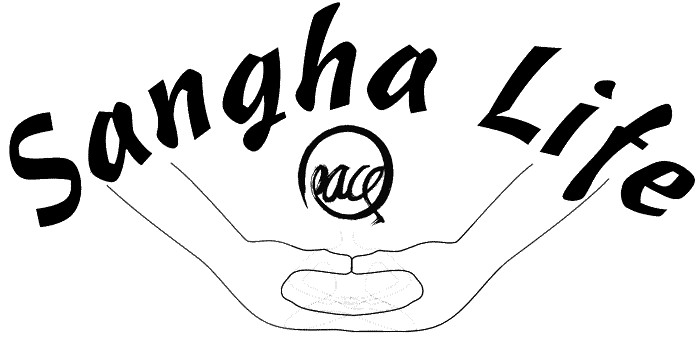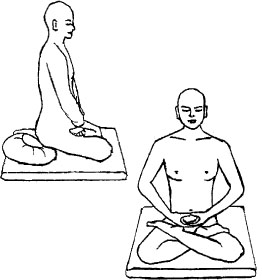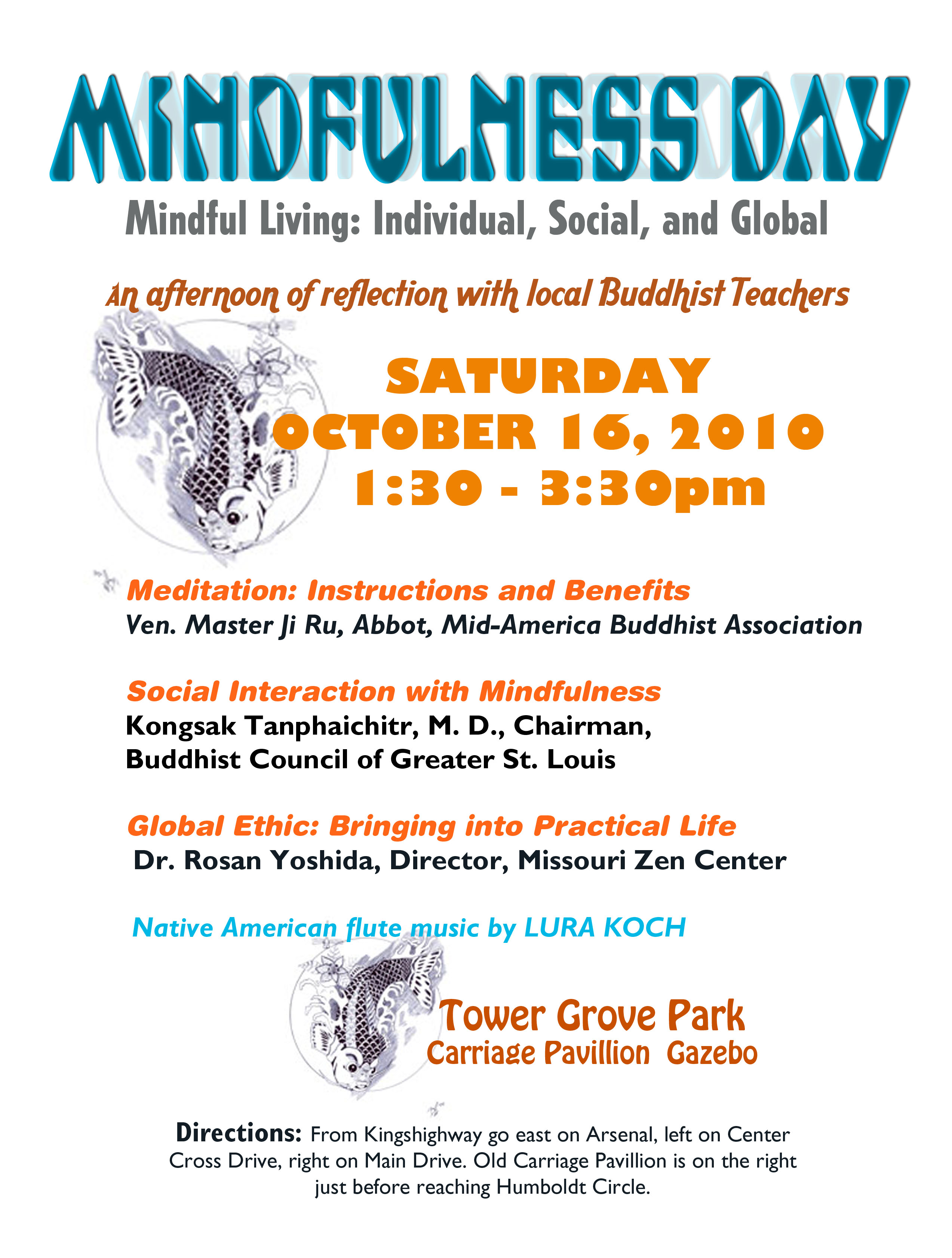

The Missouri Zen Center | December, 2010-January, 2011 |
The Missouri Zen Center
220 Spring Avenue
Webster Groves, MO 63119
(314) 961-6138
Sangha Life Will Be Quarterly in 2011During the Oct. 17 sangha meeting we decided to publish Sangha Life on a quarterly schedule starting with the next issue, February-April 2011. Going from 6 to 4 issues a year will reduce MZC’s paper use and paper and postage costs. Issues of Sangha Life will be published in February, May, August, and November. If you have an idea for an article or have information you wish to include in Sangha Life, please check with Kuryo in advance of the deadline for each issue (approximately the 20th of the month preceding the issue date). MZC Cookbook Seeks RecipesSome members of our sangha are starting to collect recipes |
for a MZC fundraising cookbook. Anyone who has recipes to contribute can put a copy into Kathleen’s mailbox at MZC. If you’d prefer to email your recipe, send it to MZC’s email address. Holiday SchedulingAt this time we expect all regularly scheduled zazen periods to take place over the end of the year holidays. We may need to recruit doans to fill in on certain zazen periods. If you would like to doan but haven’t done it before, please check with one of the current doans to receive training. Being doan is not difficult and it is an excellent way to support all beings and the sangha. Please watch the MZC e-list for any changes in scheduling and requests for doans to fill in on certain days. |
Page 2 | Sangha Life |
Inside Dharma’s Holiday Card Projectby Kalen Well, it’s that time again, when Inside Dharma members and friends send holiday cards to people in prison. I can’t tell you how many times I’ve heard how important all the holiday cards we send are to those who receive them! Some say it was the most important thing that happened to them while inside. You see, mail is a biggie in prison. It means someone cares and you are still connected to the outside world. Each year we put together a list, make mailing labels, return labels and add the stamps and the cards. All you have to do is pick up a kit and either write your name in a card or a message. Some people have put together a page of messages. What you cannot do is mail stamps, sparkles or sprinkles, cards that have things stuck to them (we We have the kits at our center on Thursday nights. Or if you would like the addresses and return address and will supply your own cards and stamps, just email me (kalen1@att.net) and I’ll forward the lists. There are 45 names on the list this year. Rohatsu Sesshin & Lay Ordination, Dec. 3-5Zen monasteries commemorate Buddha’s awakening by holding a weeklong sesshin ending on Dec. 8, Rohatsu, the day Buddha awakened according to Zen tradition. MZC held its Rohatsu sesshin from Friday, Dec. 3 through the Sunday service on Sunday, Dec. 5 Four people took lay ordination on Sunday, Dec. 5 following family sitting: Erin, Richard, Sheryll, and Steve. Congratulations to all of you! Holiday Potluck, Dec. 19Junsho is planning to return to MZC for a few days near the winter solstice. A potluck lunch in his honor and to celebrate the winter solstice is being planned for Sunday, Dec. 19 following family sitting. Please join us to welcome Junsho back and wish him well as he returns to Tassajara following winter break. New Year’s Eve SittingWe expect to hold MZC’s New Year’s Eve special sitting on Friday, Dec. 31. At this time we expect that it will follow the usual format: a 40 minute zazen period beginning at 9 p.m. followed by 10 minutes of kinhin, with zazen and kinhin ! |
epeating until shortly before midnight, when the bell is rung 108 times to mark the changing of the year. After the bell-ringing ends, participants enjoy a potluck vegetarian supper. Please check the MZC e-list to confirm the schedule for New Year’s Eve and whether or not the 8 a.m. sitting on Saturday, Jan. 1 will take place. January One-Day Sit, Meeting DatesThe next one-day sitting will take place at MZC on Sunday, Jan. 23, 2011. The next Board/sangha meeting(s) will take place at MZC on Sunday, Jan. 30, 2011 following family sitting. More info on each of these will be posted to MZC’s e-list closer to the dates each takes place. Letter from the Board of DirectorsAs 2010 ends, the MZC Board expresses our profound gratitude to our teacher Rosan for continuing to embody and promote the Awakened Way, the Global Ethic, and voluntary simplicity. Your ongoing presence and example inspires and strengthens our practice. We also express our profound gratitude to the sangha for your support in awakening all beings together and for all of your contributions to MZC over the course of 2010. Because of your efforts, MZC remains in good physical and fiscal standing. Thank you to all for your efforts! For those of you in a position to make an extra donation at the end of the year, please know that we appreciate donations of any size and that we will put them to good and careful use. Another way you can contribute to MZC is through Schnucks’ eScrip program, which donates a percentage of sales made by participating members to up to three nonprofit groups of their choice, including MZC. Please sign up for this program if you have not yet done so. Sign-up materials are available on MZC’s kitchen counter or at Schnucks stores. To donate, present your card before the checkout process begins, otherwise your purchase percentage may not properly be contributed. May our practice sustain and support all beings in 2011. Correction: The title of the article: “How We Can Solve Global Problems” in Sangha Life, June-July, 2010 is corrected to: “How We Can Live Every Day A Good Day”. |
December, 2010-January, 2011 | A Publication of the Missouri Zen Center |
Page 3 | Sangha Life |
by Kuryo
David Roberts, one of the editors at Grist.org, has been running a series of articles about how to reduce the amount of energy used in the US. One of his recent posts concerned a commonly-held idea among advocacy groups that education must preceed changes in behavior: unless people know why they need to change something they are doing, they won’t have the motivation needed to change it. However, research into behavioral change suggests that education alone often does not lead to changes in behavior. Learning exactly what barriers exist to adopting a desired behavior and reducing those barriers, along with increasing the benefits from adopting the behavior, actually do effect behavioral change, according to some of the recent research. Once people change their behavior, only then do they change their view of who they are and why they do what they do.
Reflecting on this article, it struck me that one way to look at zazen is as a form of behavior change that in turn leads to a change in how we view ourselves. Sometimes we joke that instead of doing something, we should just sit there! But those of us who have sat zazen know that it is far from just sitting there. Zazen is active sitting, as opposed to the passive sitting that we do at other times. Zazen fully engages the body-mind in upright sitting. We come to balance. In my experience, what happens in zazen is that whatever thought or mind-state I am having is not immediately followed by the usual unconscious, habitual action. Because I cannot go straight to that unconscious action when I sit zazen - especially when I sit zazen at MZC, as part of the sangha - the link between the thought and the action is broken, at least at that time. Now if that link is only broken once, chances are the next time that thought occurs I’ll go straight to the habitual action. But if I sit zazen many times, that thought is bound to come up many times; the link between the thought and action is thus severed many times. Eventually, I will have the thought outside of zazen and, because the link between thought and action has been severed many times during zazen, I will, for a change, not go straight to the habitual action. In the resulting spaciousness I will be able to choose a more-appropriate action based on what is actually happening at that instant. Zazen reduces one of the major barriers to changing habitual actions: the tight and usually unconscious link between thought or mind-state and the action that follows it. Now that I have been sitting zazen for over a decade, I have experienced the relief that comes from not going straight from certain thoughts to their linked habitual actions. In turn, my thoughts have changed: less energy goes into maintaining long-held ideas about my perceived shortcomings, leaving me with more space and energy to respond more fully to other people.
 | 
|
December, 2010-January, 2011 | A Publication of the Missouri Zen Center |
Page 4 | Sangha Life |
E-mail ListSubscribe to our e-mail list at: http://groups.google.com/group/mzclist Once you are signed up, you can send messages to the list using this address: mzclist@googlegroups.com |
Regular Zendo ScheduleSundayYou are welcome to come throughout the morning, but please do not enter the zendo during zazen. Enter quietly at other times. MondayTuesdayWednesdayThursdayFridaySaturdayWork periods may be scheduled following zazen.
| ||
December, 2010-January, 2011 | A Publication of the Missouri Zen Center |
Insert Page | Sangha Life |

December, 2010-January, 2011 | A Publication of the Missouri Zen Center |
Insert Page | Sangha Life |
by Kuryo
In the last issue, we considered some free or low cost measures to take to reduce your use of heating over the coming heating season and why you might wish to take these actions. The measures we’ll consider this issue are generally easier for homeowners to do than renters, although some renters may find some of them practical as well. The costs run the gamut from rather cheap (caulk, window films, weather-stripping) to quite expensive (insulation, new windows). While all measures will quickly save enough energy to compensate for the energy required to make them, some of the measures will pay back financially quickly (caulk), others not in less than 10-20 years (wall insulation). They will all pay back immediately in terms of reduced discomfort at lower thermostat settings.
A surprising amount of the heated air in a dwelling leaks straight to the outside through gaps and holes. Plugging those gaps is the cheapest and most cost-effective way to reduce your heating cost and fuel use. Look for gaps to seal wherever two or more surfaces meet, such as where your windowframes meet the house or your door contacts the door frame. Caulk and weatherstripping are what you need to seal whatever gaps you find. Many if not most hardware stores carry books that include details on how to apply these materials. It’s likely that your public library has similar books available for checkout. The book Homemade Money, referenced at the end of this article, has a chart comparing different types of caulk. If you’ve sealed most of the leaks, you will notice a decrease in cold drafts, and your feet will thank you, although your heating utility may not.
Some gaps hide in non-obvious places, like the sheet-metal ductwork of a forced-air heating system that leaks heat into an unfinished basement. The best way to find all the gaps, if you can afford it, is to retain the services of a home performance contractor. This will cost you on the order of a few to several hundred or more dollars, depending on the size of the dwelling. In the St. Louis region, you can locate them through the Healthy Planet newspaper (free at various locations around town, including businesses on Big Bend near MZC) or through the Earthways Center portion of the Missouri Botanical Garden’s website (www.mobot.org). If you have the financial resources and you can find a contractor that does the work, you can hire them to seal the gaps that your home performance contractor found. The older your dwelling is, the more leakage it probably has and the faster the payback will be once the leaks are found and sealed (and the more comfortable you will feel in winter).
Your dwelling also leaks warmth through uncovered and single-pane windows. You can cut down on these losses with clinging window films, storm windows, and even just closing the blinds and curtains over your windows at night. If you want to go to a little more effort, some books and websites show you how to make insulated window coverings, or you can look for a vendor who can make them to order.
Adding insulation is what comes to most peoples’ minds when they think about saving energy. Insulating is only cost-effective, however, if it’s done after you seal air leaks. The most cost-effective place to add insulation is in your attic if you don’t already have enough. In the St. Louis area you want to have enough insulation in your attic to achieve an R-44 rating. There are a variety of different materials to choose from when adding insulation to your attic. You’ll want to choose a material which is compatible with any insulation which is now in place and is not hazardous. Blown cellulose is probably the most suitable material for most attics, but more difficult for a do-it-yourselfer to install than fiberglass batts. Homemade Money has good information on the advantages and disadvantages of various insulation materials. Other good places to add insulation are to forced-air ductwork (but only after it’s sealed) and to basement ceilings. Blowing insulation into uninsulated walls is helpful as well but requires a long time for financial payback and is best done by specialists.
If you have a pre-1990 furnace needing to be replaced, by all means replace it with the most energy-efficient model you can afford. Natural gas forced-air furnaces of 96% or better efficiency are readily available. This is an expensive and long-payback item, but if you need to replace the furnace anyway, it’s worth doing.
Probably the last thing to consider for most people is replacing windows. New windows are expensive and require a lot of energy to produce. You’ll find it more cost-effective to caulk and weather-strip around your windows, replace any broken window panes and re-putty any loose ones, and add clinging window film and/or storm windows than to replace your windows. Home rehabbing websites have lots of information on repairing old wooden windows and why you might want to repair them rather than replace them. If you do choose to buy replacement windows, spend however much is needed to get double-pane windows with the longest possible guarantee against leakage. Once they leak, and they will leak eventually, you will have permanent fogging between the two layers of glass.
Homemade Money: How to Save Energy and Dollars in Your Home, by Richard Heede (Rocky Mountain Institute, www.rmi.org, 1995)
December, 2010-January, 2011 | A Publication of the Missouri Zen Center |